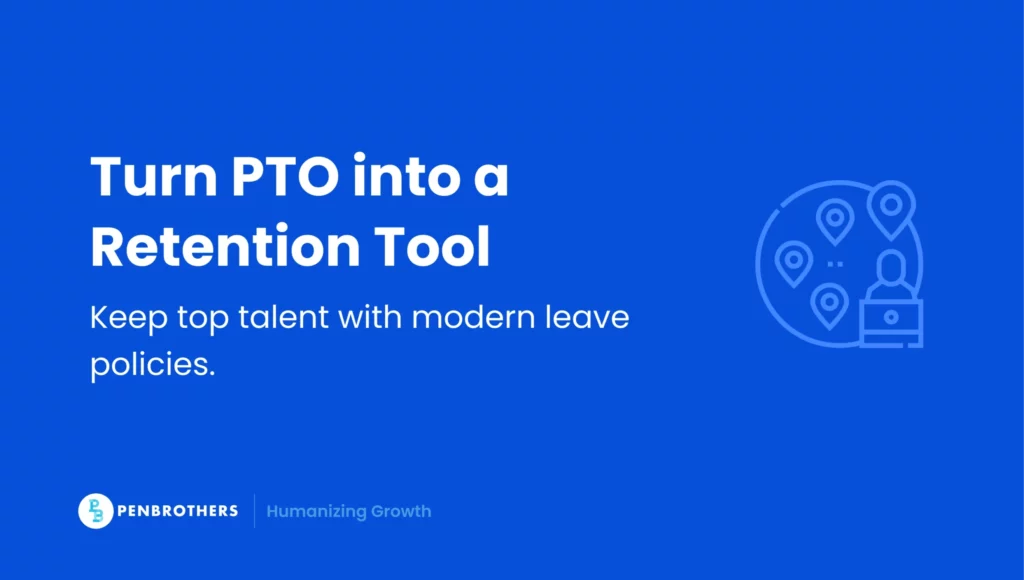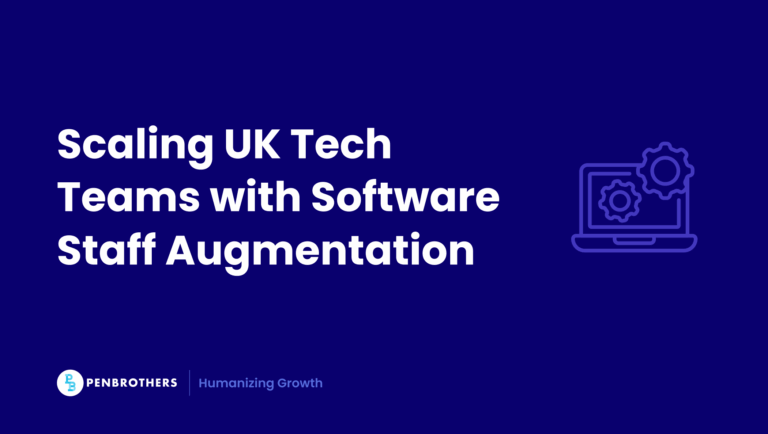The global shift to remote work has dramatically transformed talent acquisition and management. For discerning hiring managers, especially those tapping into dynamic remote talent hubs, Paid Time Off (PTO) is no longer just a basic perk. In 2025, it has evolved into a strategic differentiator for building highly engaged, resilient, and ultimately, high-performing remote teams.
Forget viewing PTO as a mere administrative checkbox or a burdensome cost. We advocate for a fresh perspective: PTO is a proactive investment in your employees’ well-being, a powerful tool for talent retention, and a direct pathway to sustained productivity for your distributed workforce.
As we look towards 2025, understanding and optimizing your PTO strategy is absolutely crucial for competitive advantage in the global remote talent market, particularly when managing teams in culturally rich and legally distinct environments like the Philippines. Evolving legal landscapes, shifting employee expectations, and continuous technological advancements are all shaping how forward-thinking companies approach time off.
Redefining PTO for the Remote Era
In the traditional office, PTO was a straightforward affair: a fixed number of days for specific reasons. But the remote revolution demands a re-evaluation of these conventional definitions.
What is “PTO” in a Remote Context?
With remote work, the boundaries between sick days, personal days, and vacation time become less clear. The home office can easily become an “always-on” environment, making it harder for employees to truly disconnect. This has accelerated the adoption of more flexible PTO models.
- Bundled PTO combines all forms of paid absence into one flexible fund, and organizations empower their team members to decide how they utilize their time off.
- Unlimited PTO, while still a niche concept, offers employees the freedom to take as much time off as needed, provided their work is done.
The underlying principle for remote teams, regardless of the model, is trust and results-driven, moving away from strict hourly tracking to focusing on output.
The Unique PTO Challenges of Remote Workforces:
While remote work offers immense benefits, it introduces unique challenges for PTO management:
- “Always-On” Culture & Digital Burnout: The constant connectivity of remote work can lead to employees feeling pressured to always be available, resulting in under-utilization of PTO and increased stress. For diligent remote professionals, especially those in service-oriented cultures, taking time off can feel like a luxury or even a liability.
- Time Zone Tangles: Coordinating PTO approvals, ensuring adequate team coverage, and maintaining seamless communication across diverse time zones requires careful planning and robust systems.
- Maintaining Connection & Culture: Without daily physical cues, it can be harder for managers to gauge employee well-being. It’s crucial to cultivate a company culture that empowers remote employees to confidently take their allotted time off, free from any sense of guilt.
- The Subtle Pressure to Overperform: In a remote setting, where visible “face time” is absent, some employees may feel a heightened pressure to prove their dedication by working excessively and foregoing much-needed breaks.
Navigating the Legal Landscape
For any organization managing remote teams across borders, understanding country-specific labor laws is paramount. What flies in one jurisdiction might lead to significant penalties in another.
Global Compliance, Local Nuances:
A one-size-fits-all PTO policy is a recipe for compliance disasters when dealing with a global remote workforce. Each country, including the Philippines, has its own intricate web of mandatory leave types, accrual rules, and payout requirements. Prioritizing local legal compliance forms the bedrock of any successful international PTO strategy.
Decoding Philippine Leave Laws for Remote Employees:
The Philippines has well-established labor laws that cover employees, regardless of whether they work on-site or remotely under a local employer. Hiring managers must be intimately familiar with these “non-negotiables”:
- Core Statutory Leaves Deep Dive:
- Service Incentive Leave (SIL): Under Article 95 of the Labor Code, employees who have rendered at least one year of service are entitled to five (5) days of SIL with pay annually. Insight: Unlike many other leave types, unused SIL is convertible to cash at the end of the year or upon separation, making it a distinct consideration for your payroll and benefits strategy. Many companies opt to provide incremental accrual (e.g., 0.42 days per month) to meet this requirement.
- Expanded Maternity Leave Law (RA 11210): Qualified female employees are entitled to 105 days of paid maternity leave, with an additional 15 days for solo parents. This leave can be allocated before and after childbirth.
- Paternity Leave (RA 8187 & RA 11210): Married male employees are entitled to seven (7) days of paid paternity leave for the first four deliveries of their lawful wife. This can be extended by 7 days if transferred from the mother’s maternity leave.
- Solo Parent Leave (RA 8972/RA 11861): Qualified solo parents are granted seven (7) days of paid leave annually to attend to parental responsibilities.
- Special Leave Benefits for Women (RA 9710/Magna Carta of Women): Female employees who have rendered at least six months of continuous service and undergo surgery due to gynecological disorders are entitled to two (2) months of paid leave.
- Leave for Victims of VAWC (RA 9262): Female employees who are victims of violence against women and their children are granted ten (10) days of paid leave to attend to legal and medical concerns.
- Other Considerations: While not always strictly mandated, many companies in the Philippines also provide bereavement leave (commonly 3 days) as a customary benefit. Public holidays, which are numerous in the Philippines, are also generally paid days off.
- Service Incentive Leave (SIL): Under Article 95 of the Labor Code, employees who have rendered at least one year of service are entitled to five (5) days of SIL with pay annually. Insight: Unlike many other leave types, unused SIL is convertible to cash at the end of the year or upon separation, making it a distinct consideration for your payroll and benefits strategy. Many companies opt to provide incremental accrual (e.g., 0.42 days per month) to meet this requirement.
- Beyond Statutory: To attract and retain top Filipino talent, many companies offer vacation leave (commonly 10-15 days beyond SIL) and sick leave (often 5-10 days) as part of their comprehensive benefits package, even if these specific types are not federally mandated beyond SIL.
The “Bundled PTO” Concept in the Philippines:
The idea of “bundled PTO,” which combines all paid leaves into a single pool, is gaining traction globally. However, its application in the Philippines requires careful consideration due to the specific nature of certain statutory leaves.
Can you legally bundle all leave types?
Not entirely. While general sick and vacation leaves can often be bundled, mandatory leaves like Maternity, Paternity, Solo Parent, Special Leave for Women, and VAWC leave typically must remain distinct as they have specific eligibility criteria, durations, and purposes mandated by law. Service Incentive Leave (SIL) also has its unique cash conversion rule.
Crafting Your 2025 Remote PTO Policy
With the legal landscape in view, it’s time to build a PTO policy that serves both your business goals and your remote team’s needs, particularly for your Filipino workforce.
Policy Design Principles for Global Remote Teams:
- Clarity is King: Ambiguity breeds confusion. Your policy must be crystal clear on eligibility, accrual, request procedures, and payout rules.
- Fairness & Equity: Ensure the policy is perceived as fair and equitable across all remote employees, regardless of location or seniority.
- Compliance-First, Flexibility-Second: Always start by ensuring full compliance with all relevant local labor laws (especially in the Philippines), then layer in additional company benefits and flexibility.
Exploring PTO Models for Remote Teams:
The choice of PTO model significantly impacts your team’s experience.
Traditional Leave:
This model maintains separate buckets for various leave types. In the Philippines, this typically means statutory leaves (SIL, Maternity, Paternity, etc.) are distinct, with company-defined vacation and sick leaves as additional, separate entitlements. When this makes sense: For companies that require granular tracking for specific purposes or those operating in highly regulated environments, where distinct leave categories simplify compliance.
Bundled PTO: It’s a system where an employee’s general sick leave and vacation days are combined into one accessible “bank” for flexible use. As discussed in Section 2, statutory leaves in the Philippines usually remain separate.
How it works: Employees accrue a single pool of time they can use for personal reasons, minor illnesses, or vacations, simplifying choice and reducing administrative burden.
Unlimited PTO for Remote Teams
The “Real” Unlimited: This model provides employees the freedom to take time off as needed, without a fixed limit. The emphasis shifts to accountability for outcomes rather than hours clocked.
Philippine Legal Ambiguity: While increasingly popular globally, “unlimited PTO” has no direct legal definition under Philippine labor law. Consequently, there’s a lack of specific legal precedent regarding payouts for “unused” unlimited PTO upon separation. Companies offering this in the Philippines should ensure their employment contracts clearly define the policy and outline payout terms (or lack thereof) to avoid future disputes.
Best Practices for Remote Unlimited: Clear communication, manager training on encouraging use, and fostering a “take it when you need it, get your work done” culture.
Implementing & Championing PTO
A great PTO policy is only as effective as its implementation and the culture that supports it.
Technology for Seamless Remote PTO Management:
Effective PTO tracking is non-negotiable for remote teams, especially with varying global compliance needs.
- Global HRIS with Philippine Compliance: Look for Human Resources Information Systems (HRIS) that offer robust features for managing payroll and leave compliance. Platforms with strong localization for the Philippines or global systems with well-developed country-specific modules are ideal.
- Automated Accruals & Real-time Tracking: Automate accrual calculations, time-off requests, and approvals to reduce administrative burden for HR and provide real-time transparency for employees.
- Self-Service Portals: Empower remote employees to view their leave balances, submit requests, and track their approvals independently.
- Integration with Collaboration Tools: Seamlessly integrate PTO requests with your team’s communication platforms (e.g., Slack, Microsoft Teams) for easy visibility and coordination among remote squads, ensuring no one misses a planned absence.
Fostering a Pro-PTO Culture in a Remote-First Environment
The policy document is just the start. The true impact of PTO comes from the culture you cultivate.
- Lead by Example: Managers and senior leaders must visibly take their own time off and openly communicate its benefits. In the Philippines, where a strong work ethic is highly valued, this modeling is particularly crucial to alleviate any unspoken pressure to constantly be “on.”.
- The “Cover Me” Mentality: Implement clear protocols for covering duties when a remote team member is on leave. This reduces guilt for the employee taking time off and ensures business continuity.
- Celebrating Time Off: Acknowledge and encourage breaks as a vital part of a healthy work-life balance. Share vacation photos (if comfortable) in internal channels to normalize and celebrate disconnecting.
- Mental Health Days: Proactively integrate and promote mental health leave in line with the Philippine Mental Health Act (RA 11036), which mandates a Mental Health Workplace Policy and Program for employers. Insight: Frame these as proactive wellness measures, not just reactive sick days. This resonates with a growing national awareness of mental well-being.
Addressing PTO Challenges Unique to Remote Teams
Proactive management of common remote PTO hurdles is key.
Communication Protocols for Leave: Establish clear guidelines for announcing leave, setting out-of-office messages, and arranging handovers to avoid disruption and manage client expectations, especially across different time zones.
Managing “Hoarding”: For policies with unlimited or generous accrual, actively work to encourage employees to use their time off. This might involve regular check-ins, highlighting the benefits of breaks, and ensuring the workload is manageable.
Fairness in Approvals: Develop consistent guidelines for approving PTO requests to ensure fairness and avoid any perception of favoritism across diverse remote sub-teams.
The 2025 Outlook: Evolving PTO for the Future of Remote Work
The remote work landscape is dynamic, and PTO policies must evolve with it. Looking towards 2025, several trends are shaping the future of time off.
Emerging Trends in Remote PTO:
- “Disconnection Right” & Digital Well-being: There’s a growing global movement advocating for employees’ right to disconnect outside working hours. This could influence future PTO policies to more explicitly support digital detoxes and prevent burnout.
- Mini-Sabbaticals & Recharge Breaks: Shorter, more frequent extended leaves (e.g., 2-4 weeks) are gaining popularity as a way for remote employees to prevent burnout without needing a full sabbatical.
- Focus on Outcomes, Not Hours: As remote work solidifies output-based performance metrics, PTO policies will naturally align, supporting more flexible and effective time off utilization that prioritizes results.
- Personalized PTO: Moving towards more tailored leave options, where employees can choose from a menu of benefits (e.g., additional wellness days, professional development leave), could become a differentiator.
Anticipating Legislative Changes & Best Practices:
The Philippines is actively embracing remote work, with ongoing discussions and legislative developments.
- The Telecommuting Act (RA 11165), passed in 2018, provides a framework for telecommuting as a legitimate work arrangement, and its implementing rules continue to evolve to meet the needs of the growing remote workforce.
- The recent approval of a Digital Nomad Visa (Executive Order No. 86) in April 2025 signals the Philippine government’s proactive stance in attracting global remote talent, which could lead to further adjustments in labor laws and expectations.
- Hiring managers should stay informed on potential updates to the Labor Code, SSS, PhilHealth, and Pag-IBIG contributions, as well as any new advisories from the Department of Labor and Employment (DOLE) that may impact remote work and leave benefits. Regularly consulting with a local labor lawyer and reliable HR partners is key to staying agile and legally compliant.
PTO as a Pillar of Your High-Performing Remote Team in the Philippines
In 2025, PTO is no longer a footnote in your HR manual; it’s a critical strategic lever for success in the remote work era. For hiring managers building and scaling teams in the Philippines, a thoughtfully designed and culturally sensitive PTO policy is vital for attracting, engaging, and retaining top Filipino talent.
Move beyond basic compliance. Embrace PTO as a competitive differentiator, a testament to your commitment to employee well-being, and a key driver of team success. Remember, behind every remote worker is an individual with personal needs and aspirations. A PTO policy that respects these, and is informed by local cultural values of family and community often seen in the Philippines, will cultivate a truly happy, engaged, and high-performing remote team for years to come.






